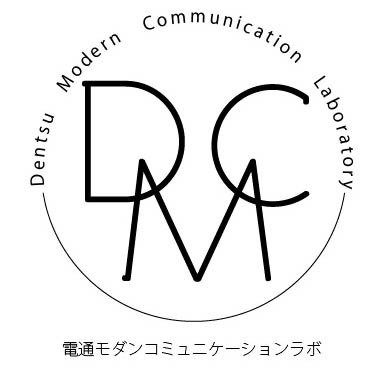Note: This website was automatically translated, so some terms or nuances may not be completely accurate.
"The Science of TV Commercials"
This time, we feature "Scientifically Analyzing TV Commercials" (Sendenkaigi) by Ryuji Yokoyama, CEO of Digital Intelligence.
The title "Scientifically Analyzing Commercials." What does "scientifically analyzing" mean? This book defines it as "ensuring reproducibility." Television, with its vast array of surrounding variables, and television commercials—the advertising content broadcast on TV—present significant challenges in precisely measuring and verifying their effectiveness. This book introduces the latest efforts aimed at enhancing the reproducibility of their advertising impact, however slightly.

Nearly 10 million internet-connected TVs are already in use
While the keyword "digital" is being loudly touted in the advertising industry these days, this book defines "digital marketing" not as something confined solely to the online realm , but as "integrating the three domains of mass media, real-world, and online using digital data to optimize customer touchpoints" (p.176).
Regarding online and offline, various behavioral data became available early on. In contrast, television, the most influential mass medium, had only a single metric: "viewership ratings." Furthermore, the primary method for evaluating TV commercials involved forcing viewers to watch them before conducting surveys, leaving no way to explore the "subconscious reactions" said to account for 95% of human responses.
However, nearly 10 million TV sets in Japan are now connected to the internet. This number is projected to grow further, driven by factors like replacement demand ahead of the Olympics. Internet-connected TVs are digital devices, just like PCs and smartphones, enabling the collection of detailed viewing log data beyond mere "ratings." Regarding commercial material evaluation, approaches using neuroscience—such as measuring brain waves—have been developed to gauge unconscious reactions.
This means that even in the mass media domain, where it was previously difficult, data-driven verification can now enhance reproducibility. Consequently, the aforementioned goal of "integrating the three domains of mass, real, and net through digital data to optimize customer pathways" is becoming achievable.
Evaluating Commercials Using Neuroscience
One potential neuroscience-based commercial evaluation method introduced is the "Sensory Analyzer," a simplified evaluation kit developed by Dentsu ScienceJam Inc. It analyzes five sensory responses (interest, liking, stress, concentration, and calmness) from brainwaves.
I've actually handled this Sensibility Analyzer myself. It's extremely lightweight, causing almost no discomfort when worn on the head. Previously, measuring brainwaves required using MRI machines or wearing large EEG devices. The very act of being in such a specialized state could significantly influence the measurement results, creating a disconnect from the actual viewing environment. This device has the potential to resolve that issue.
At Dentsu ScienceJam Inc., we are using this Sensitivity Analyzer alongside our archive of past commercials. By accumulating brainwave data during viewing and identifying patterns, we aim to uncover insights for creating "highly effective creative content."
(Note: Leveraging its mobility, the Sensory Analyzer is used in various marketing verification experiments. For example, it verifies how interest levels change when tourists are provided with guides versus not, to explore overseas tourism needs. It also identifies high-stress areas within family restaurant locations to improve store design.)
Nielsen also conducts neuromarketing research combining EEG and eye-tracking, analyzing three key metrics: "Attention," "Emotional Engagement," and "Memory."
Analysis results confirm what was previously suspected intuitively: differences in brainwave responses vary more significantly between genders than across age, race, or nationality; overloading product shots in commercials with too much information disperses attention and halves effectiveness; and inserting functional explanations without context or story leads to lower scores.
Furthermore, neuromarketing research has revealed concerning situations previously unknown, such as consumers unconsciously recalling competing brands even when correctly answering brand names in surveys, and competing brands becoming embedded in long-term memory.
Concrete Strategies for the Era of "Scientifically Measurable Commercials"
With the ability to capture diverse TV viewing data and measure even subconscious reactions to commercials, we are increasingly entering an era where "commercials can be scientifically analyzed."
Amidst these changes, a significantly different approach proposed in this book is "campaigns should also be 'agile' (immediate response)" (p.144).
By tracking the actual reach of TV commercials in real time, if target audience reach is insufficient, it should be supplemented with bid-based video ads. In other words, "optimizing through real-time operations" (omission) means that consumer reactions can also be monitored in real time, and if possible, some measures should be implemented even during the campaign period. (P.144)
To achieve this, the author proposes a "7:2:1" budget allocation. The breakdown is as follows: 70% goes to media and methods with proven effectiveness, 20% to new media and methods requiring testing, and the final 10% is reserved, as mentioned earlier, to respond to consumer reactions and competitor movements during the campaign.
Finally
So far, we've covered topics like "The Major Changes Currently Happening with TV and TV Commercials," "CM Evaluation Methods Using Neuroscience," and "Recommending Agile Campaigns to Leverage Data." This book also features "introductions to newly launched TV viewing data supply services," "case studies of insights gained from data analysis," and "the latest report on the U.S., where TV viewing environments are changing even more rapidly than in Japan." We highly recommend picking up this essential volume to prepare for the upcoming "era where commercials can be scientifically evaluated."

Was this article helpful?